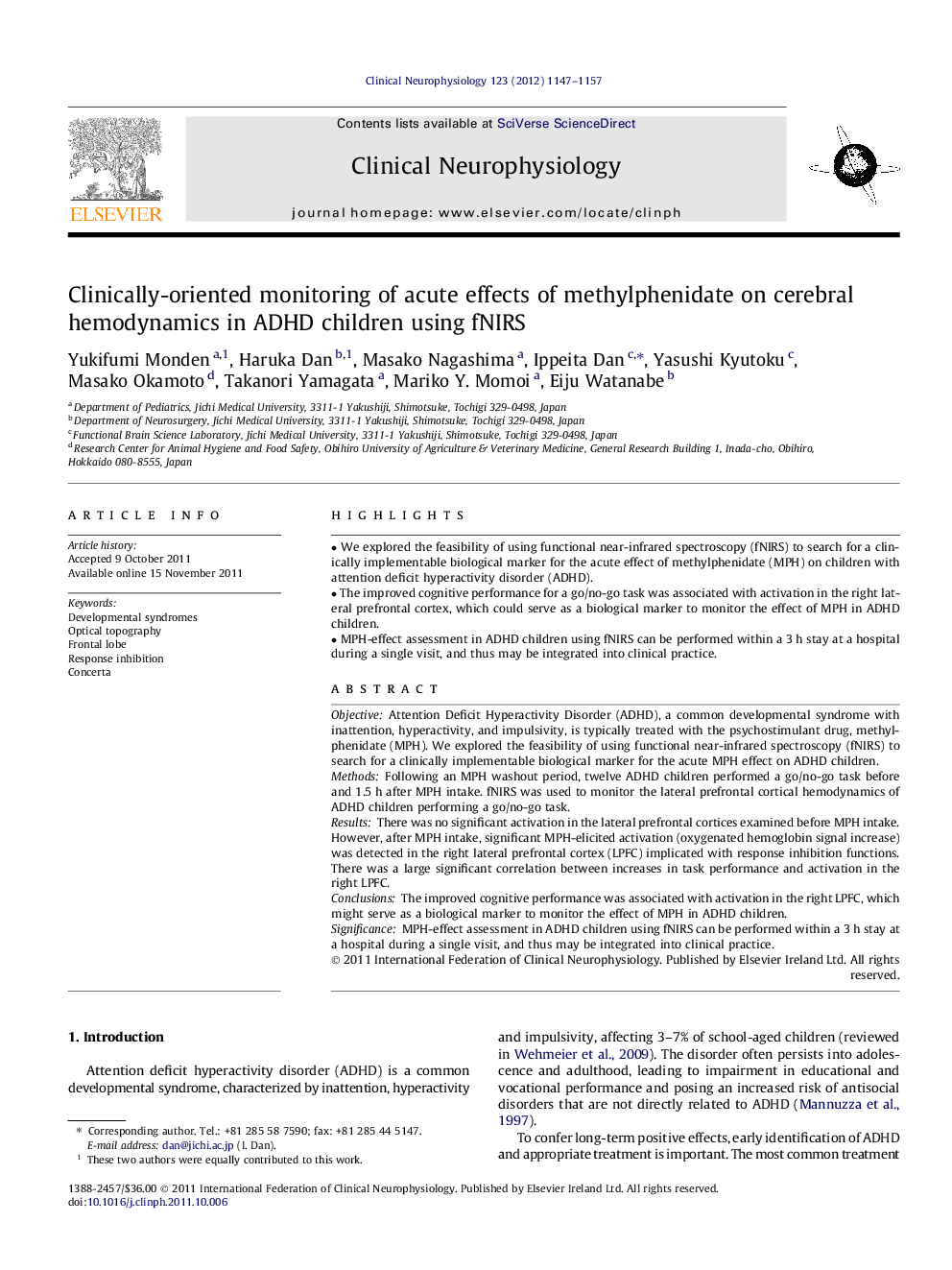| Article ID | Journal | Published Year | Pages | File Type |
|---|---|---|---|---|
| 3045015 | Clinical Neurophysiology | 2012 | 11 Pages |
ObjectiveAttention Deficit Hyperactivity Disorder (ADHD), a common developmental syndrome with inattention, hyperactivity, and impulsivity, is typically treated with the psychostimulant drug, methylphenidate (MPH). We explored the feasibility of using functional near-infrared spectroscopy (fNIRS) to search for a clinically implementable biological marker for the acute MPH effect on ADHD children.MethodsFollowing an MPH washout period, twelve ADHD children performed a go/no-go task before and 1.5 h after MPH intake. fNIRS was used to monitor the lateral prefrontal cortical hemodynamics of ADHD children performing a go/no-go task.ResultsThere was no significant activation in the lateral prefrontal cortices examined before MPH intake. However, after MPH intake, significant MPH-elicited activation (oxygenated hemoglobin signal increase) was detected in the right lateral prefrontal cortex (LPFC) implicated with response inhibition functions. There was a large significant correlation between increases in task performance and activation in the right LPFC.ConclusionsThe improved cognitive performance was associated with activation in the right LPFC, which might serve as a biological marker to monitor the effect of MPH in ADHD children.SignificanceMPH-effect assessment in ADHD children using fNIRS can be performed within a 3 h stay at a hospital during a single visit, and thus may be integrated into clinical practice.
► We explored the feasibility of using functional near-infrared spectroscopy (fNIRS) to search for a clinically implementable biological marker for the acute effect of methylphenidate (MPH) on children with attention deficit hyperactivity disorder (ADHD). ► The improved cognitive performance for a go/no-go task was associated with activation in the right lateral prefrontal cortex, which could serve as a biological marker to monitor the effect of MPH in ADHD children. ► MPH-effect assessment in ADHD children using fNIRS can be performed within a 3 h stay at a hospital during a single visit, and thus may be integrated into clinical practice.
